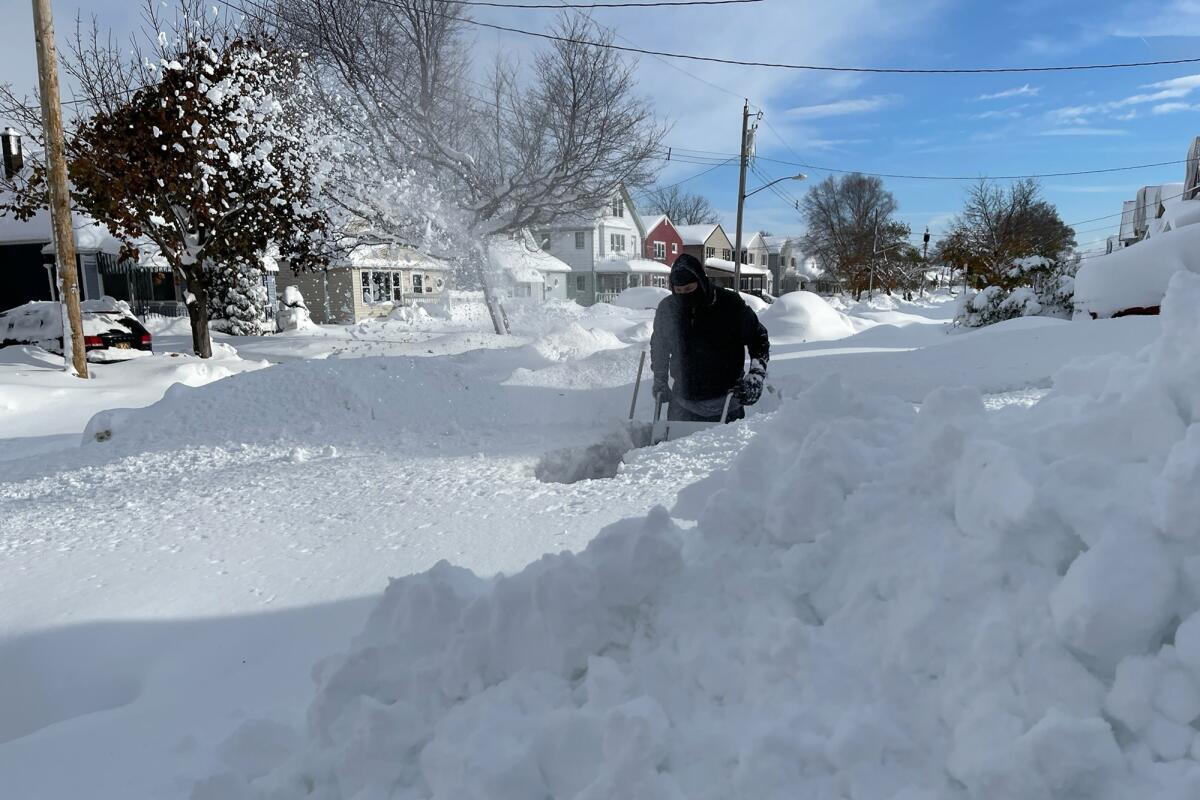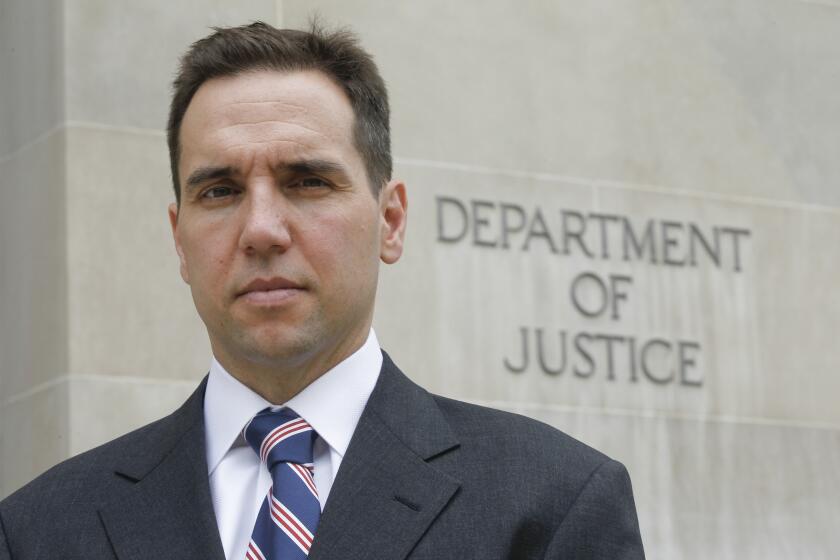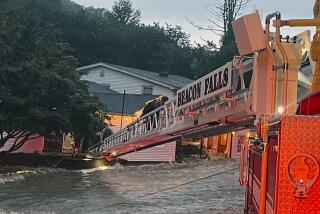Lake-effect storm dumps several feet of snow in New York; more expected

- Share via
BUFFALO, N.Y. — A massive storm dumped several feet of snow in the areas ringing Lake Erie and Lake Ontario, causing at least three deaths, forcing an NFL game to be moved and creating gridlock as tractor-trailers detoured onto smaller roads to avoid a closure of part of Interstate 90 in western New York.
The lake-effect storm had produced more than 6 feet of snow in some areas by Saturday morning. The Buffalo metro area was hit particularly hard, with some areas south of the city bearing the brunt. The front had begun to move northward from Buffalo by Saturday, but forecasts called for more snow as Monday approached.
According to the National Weather Service, the suburb of Orchard Park, home to the NFL’s Buffalo Bills, reported 77 inches by early Saturday. About 80 miles northeast of the city, the town of Natural Bridge, near the Ft. Drum Army base, reported just under 6 feet.
The inundation forced the National Football League to move Sunday’s game between the Bills and Cleveland Browns to Detroit.
Jack Smith, the prosecutor named as special counsel to oversee investigations related to ex-President Trump, has a career confronting public corruption and war crimes.
The National Weather Service predicted partial sunshine and a break from the snow Saturday in New York, but not for long.
“Later on this evening and through early next week, we’re expecting another round of lake-effect snow for much of western New York,” National Weather Service meteorologist Zack Taylor told the Associated Press. Taylor, based in College Park, Md., said that could produce as much as 15 inches of snow for areas near Lake Erie and 2 feet for areas near Lake Ontario.
In the Buffalo area, Erie County Executive Mark Poloncarz tweeted that two people died “associated with cardiac events related to exertion during shoveling/snow blowing.”
A third person — a snowplow driver in the town of Hamlet, Ind. — was killed Friday when his plow slid off the pavement and rolled over, the Starke County Sheriff’s Department said. Hamlet is about 30 miles from Lake Michigan.
In other tweets, Poloncarz expressed frustration at reports of trucks getting stuck on smaller roads as they tried to get around the Interstate 90 detour. A video posted online showed a line of trucks backed up on a street in Orchard Park.
The weather didn’t deter one Buffalo-area couple from tying the knot Saturday, a year after they became engaged.
Robert Junge said he and fiancee Maria Szeglowski decided on a November wedding because Buffalo had only had one major November storm, eight years ago, since 2000.
After the storm prompted a driving ban that forced their banquet hall to cancel, they pivoted and decided to hold the ceremony anyway and postpone the reception until next weekend. About 100 of 180 expected guests weren’t going to make it for the ceremony, Junge said.
“We’re all trying to look at [this] in a positive way,” he said. “It’s definitely going to make for some beautiful pictures and videos.
“I know this sounds like a spiel, but I’m so excited to marry my fiancee, I love her so much, nothing was going to stop me,” he added. “I don’t need anybody to be sorry. We will get through this.”
The storm’s effects varied widely in the region due to the peculiarities of lake-effect storms, which are caused by frigid winds picking up moisture from warmer lakes and dumping snow in narrow bands. Some areas of Buffalo were battered by blowing, heavy snow off Lake Erie while mere miles away, residents had to contend with only a few inches.
New York Gov. Kathy Hochul deployed about 70 members of the National Guard to help with snow removal in some of the hardest-hit areas.
Buffalo has experience with dramatic lake-effect snowstorms, few worse than the one that struck in November 2014. That epic storm dumped 7 feet of snow on some communities over three days, collapsing roofs and trapping motorists in more than 100 vehicles on a lakeside stretch of the New York State Thruway.
More to Read
Sign up for Essential California
The most important California stories and recommendations in your inbox every morning.
You may occasionally receive promotional content from the Los Angeles Times.











